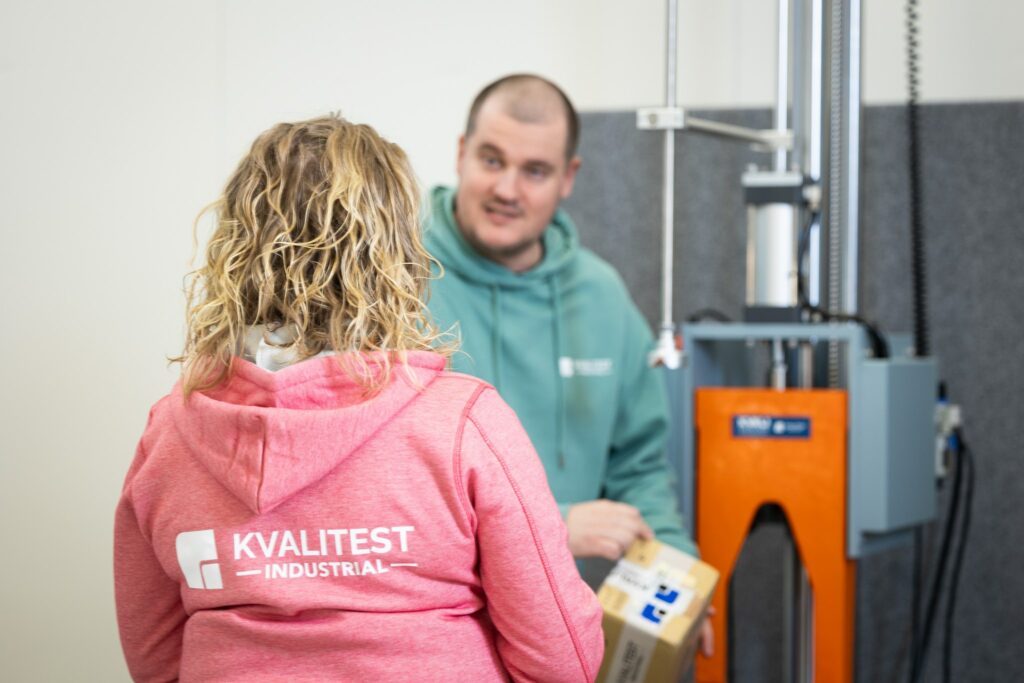
Package drop damage: Common causes and ways to prevent it
Shocks: Impacts and drops in transportation environments
A shock is a short-duration, high-intensity dynamic event characterized by a sudden change in velocity. When a moving object comes to an abrupt stop, a shock occurs. This can happen, for example, when a package is dropped. To ensure a package performs well, it must withstand the shocks it encounters throughout the distribution chain. Drop and impact hazards exist at every stage of transportation. Therefore, recognizing these risks and understanding the transport environment is crucial.
Shock during transportation
Packages are frequently dropped or subjected to impacts during distribution, but most drop heights are relatively low. The majority of drops occur during package handling or when loading and unloading from vehicles.
Handling situations such as sorting, loading and unloading, stacking, vehicle loading and transferring packages between vehicles expose them to drop risks and include many potential hazards.
Mechanical handling
Drops can be either accidental or intentional. They may be caused by human clumsiness or carelessness, slipping, etc. Although accidental drops are relatively rare, they can be severe because the drop height is usually high, and the direction of the drop may change upon impact. Additionally, time pressure negatively affects package safety. During peak seasons, accidental drops become more common as shipment volumes increase and staff must work under heavier workloads. Sometimes, shocks to packages result from a lack of proper handling equipment or facilities.
❌ In most cases, drops do not occur due to negligence but rather due to efficiency:
It is often easier and faster to drop, kick, or throw a package into place rather than placing it carefully and slowly. As a result, packages are frequently dropped from low heights as part of routine operations. When thrown, a package may travel a long distance, with the net effect occurring at the moment of final impact. These events can be damaging to both the package and its contents. Additionally, the surface onto which a package falls or impacts influences the force exerted on the product inside. Packages are also routinely dropped onto other packages. These handling shocks are typically short in duration but high in acceleration.
How can you prepare for or protect against these unfortunate scenarios?
✅ By testing. Drop testing is an effective way to evaluate packaging.
Drop testers: Cost-effective and smart testing solutions
Drop testing is one of the most common and popular packaging transportation validation tests. Drop testers are a familiar sight in many testing laboratories because they are relatively simple to use and provide significant benefits.
Drop testers are also relatively affordable, easy to use and do not require extensive training or complex maintenance. Investing in an in-house drop tester quickly pays for itself, allowing for virtually unlimited testing and retesting. Both proprietary methods and established test standards, can be utilized in this process.
Repeatability, reliability and accurate data
Repeatability is the cornerstone of development. If testing is not repeatable, it is not comparable. And as we know, quality data is power. That’s why it is important to obtain comparable and reliable drop test data using a tester specifically designed for this purpose.
Why is manual drop testing not suitable?
Manually dropping packages is usually not accurate, controlled or repeatable enough. Setting up such tests takes time, and the results are prone to inaccuracies. Instead of using makeshift setups with tape and string, it is best to use a purpose-built drop mechanism — typically a drop tester. The tester’s mechanism makes it easy to control and repeat the package’s drop orientation. The drop platform quickly retracts, allowing the package to fall freely onto the test surface. The drop orientation (e.g., package corner, edge or side) is usually defined in test standards.
Freely dropping testers are used for testing small and medium-sized packages. Packages are tested by freely dropping them onto a hard surface, usually a steel plate. They can also be dropped onto another package or onto an object such as a wooden block.
Key considerations
✅ Testing packaging according to standards cannot completely eliminate all transportation-related risks. However, it provides a strong position in potential dispute situations by demonstrating that the package has been tested against potential hazards in the supply chain. Knowledge is power, and testing is always a worthwhile investment. Reliable test results are crucial for making better decisions.
Read more about our package test systems
Should you require more information about drop testers, please do not hesitate to contact us: